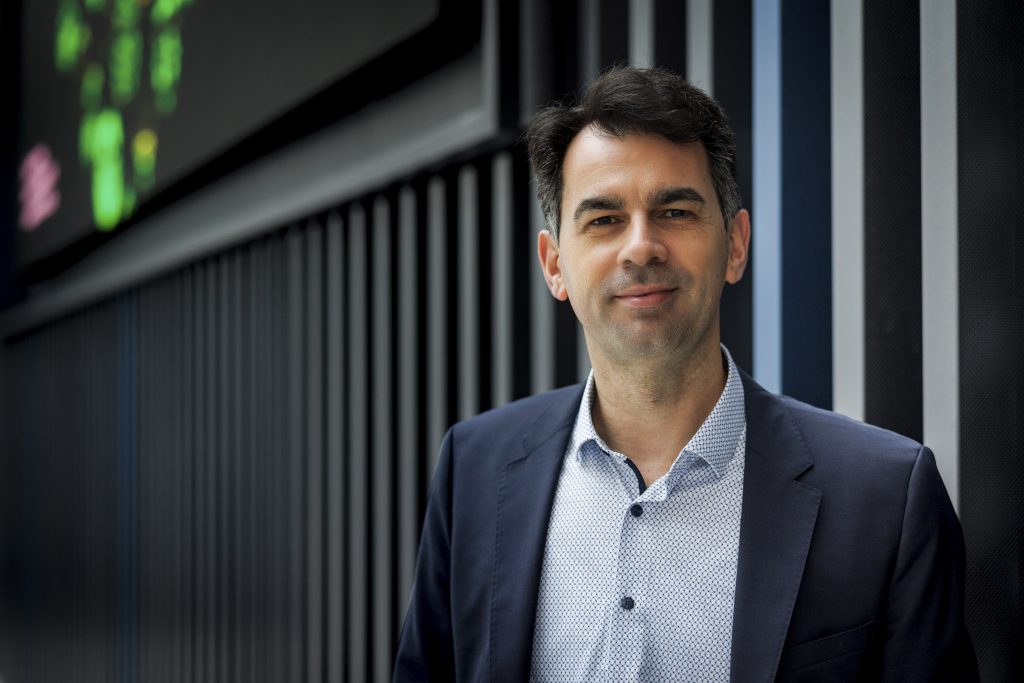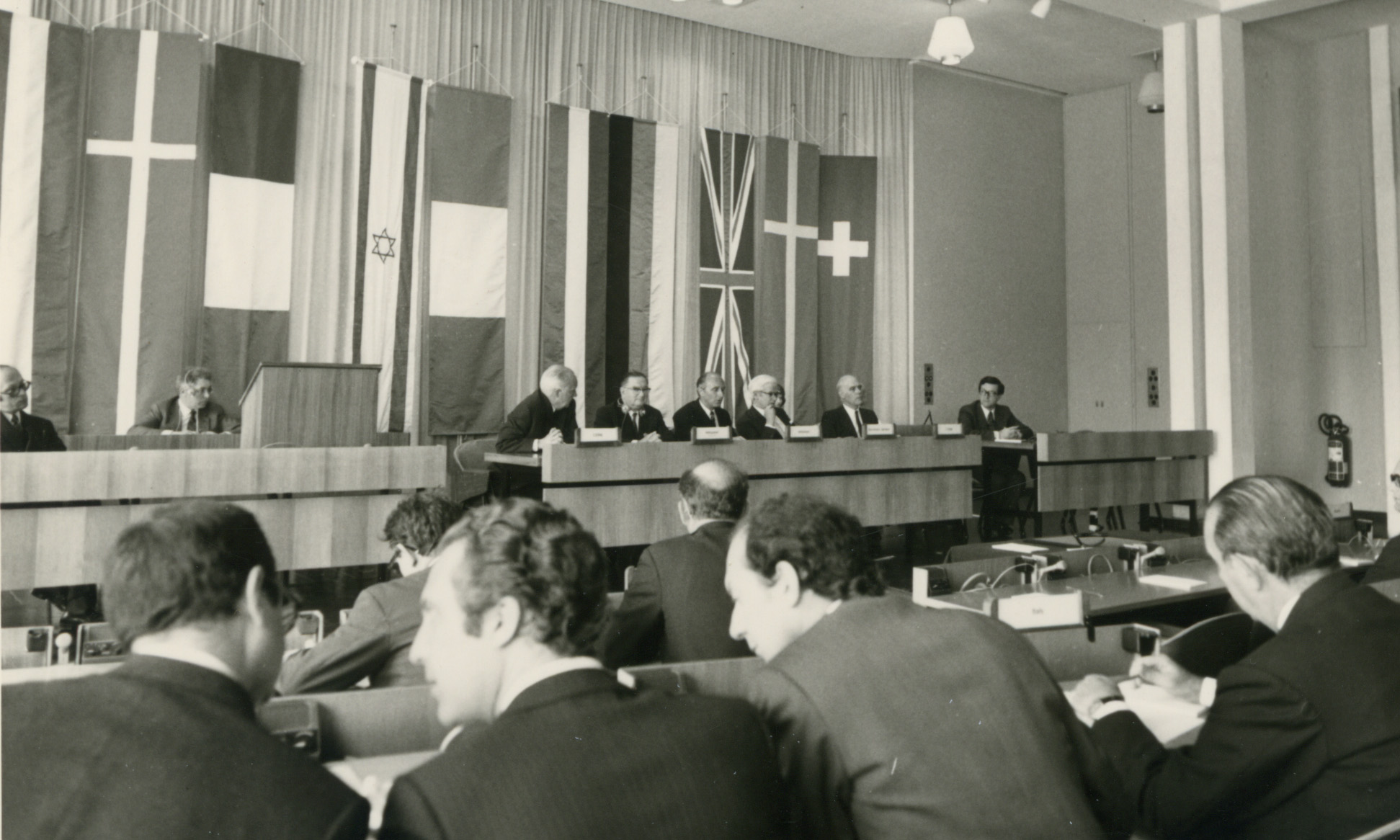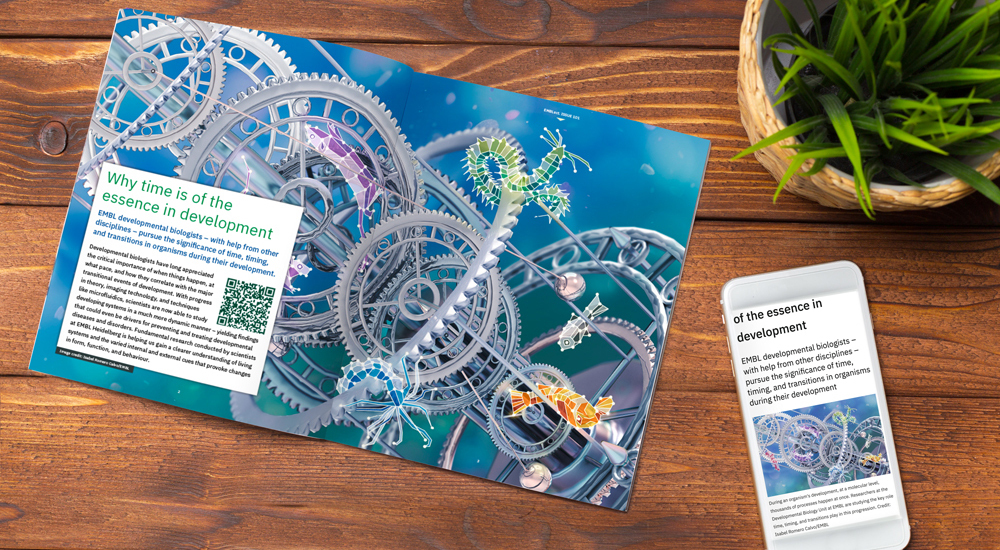
Impact of access to imaging technologies on scientific achievements
Baubak Bajoghli, Director of Austrian Bioimaging/CMI, discusses his passion for imaging and his work straddling basic and applied research in biology.
Issue 101
The EMBL agreement, which made reality the idea of creating a European laboratory for life sciences, was signed in 1973 and ratified in 1974. Fifty years later, we look back at this historic moment.

By Maria Papanikolaou and Anna Stanescu, EMBL
Although the idea of a European laboratory for life sciences was conceived in 1962, it would take 11 more years, involving conversations between Nobel prize winners, an unusual endorsement from two female UK government officials, and the signatures of 10 member state officials, to authorise the concept.
“There was resistance at the Royal Society, but persuading governments was the biggest problem. A lot of people felt that it was hopeless,” said Sir John Kendrew, EMBL’s first Director General and Nobel Prize-winning structural biologist in a 1994 interview. “In the end, the British political support came from two women, Shirley Williams and Margaret Thatcher who were both ministers in the Department of Education and Science in successive British governments. Long before she became Prime Minister, Margaret Thatcher had read chemistry at Oxford…as the new Conservative Secretary of State for Education and Science, she apparently took the EMBL file home one weekend – it was about a foot thick – and came back on Monday morning and said, ‘We join!’”

The idea for the creation of a European molecular biology laboratory was first proposed when two Nobel Prize-winning biologists, Kendrew and James Watson, met with Leo Szilard – Hungarian-German-American physicist and inventor – and the Director General of CERN Victor Weisskopf at CERN in Geneva in December 1962.
In 1964, the European Molecular Biology Organization (EMBO) was founded, followed by the establishment of the European Molecular Biology Conference (EMBC) in 1970. Prolonged discussions followed, allaying the concerns of the national governments – member states of the EMBC – that a central laboratory might “draw away their country’s best scientists”
In 1971, the EMBC took significant steps towards the creation and growth of the laboratory. They did so by forming four working groups, in cooperation with EMBO, to guide the establishment process. These efforts were overseen by a Steering Committee, and as a result of these collaborative endeavours, a draft agreement outlining the establishment of the laboratory was prepared (EMBC, Annual Report April 1971, Kenneth Holmes material, EMBL Archive).
Between 1972 and 1973 the EMBL Agreement was ready to be signed by ten out of the thirteen member states of the EMBC. On April 12, 1973, the EMBL Secretary-General announced to the EMBO members the date and location of the EMBL Signing Agreement Ceremony, pointing out that “the Agreement will take legal effect when a sufficient number of the Governments have ratified the representatives’ signatures – a process that is estimated to require about one year”.
The pivotal moment in the establishment of EMBL was the signing of the EMBL Agreement on May 10, 1973, followed by its ratification in July 1974.

The agreement signing ceremony took place at CERN in Geneva on the 10th of May 1973, where the document was signed by representatives of ten of EMBC member states – Josef Löns for the Federal Republic of Germany, Frederick Mason for the United Kingdom of Great Britain and Northern Ireland, Erik Thrane for Denmark, Rudolf Martins for Austria, Bernard Dufournier for France, Shabtai Rosenne for Israel, Rene Keller for Switzerland, Polak Rosenberg for the Netherlands, Smoquina from Italy, and Rune Fremlin from Sweden.
The EMBL Signing Agreement Ceremony was a significant event attended by prominent figures from the worlds of science and politics who had played pivotal roles in the establishment of EMBL.

Among the distinguished participants were: François Jacob, a renowned French biologist and Nobel Prize laureate, Paolo Fasella, the Director General of the European Commission’s Directorate General for Science, Karl Korz, the First Mayor of Heidelberg (Baubürgermeister), Raymond Appleyard, the Executive Director of EMBO, Willibald Jentschke, the Director General of CERN (the European Organization for Nuclear Research), H. Voirier, the president of EMBC, and Jeffries Wyman, who served as the Chairman of the Steering Committee responsible for the establishment of EMBL, and was also the first Secretary General of EMBO and professor at the University of Rome.
These individuals came together to mark the historic occasion of the EMBL Signing Agreement Ceremony, symbolising the culmination of dedicated efforts to bring this vital scientific institution into existence.
The EMBL Agreement officially became effective on July 4 1974, coinciding with the day when most of the signatory states had ratified, approved, and accepted the agreement, in accordance with its Article XV. Notably, France’s participation in the ratification process at this stage was pivotal in bringing the agreement into force on this date.
In 2024, EMBL will celebrate its fiftieth anniversary. The occasion not only offers us an opportunity to share stories from past achievements but more importantly, provides us a reminder to keep moving forward to pursue tough scientific questions, pushing forward the frontiers of molecular biology and further integrating with other disciplines to have real-world impact. We hope you will join us in celebrating and reflecting on EMBL’s tradition of pushing the envelope of scientific possibility as well as leading European life sciences to new heights.

Baubak Bajoghli, Director of Austrian Bioimaging/CMI, discusses his passion for imaging and his work straddling basic and applied research in biology.

Sara Fahs, who did her PhD from EMBL Heidelberg and is one of the newest members of the EMBL alumni association board, writes about key insights from her journey in science and her work on medicinal chemistry, during a career spanning academia and industry.

Click here to download a quick overview of all the articles included in this digital issue of EMBLetc.